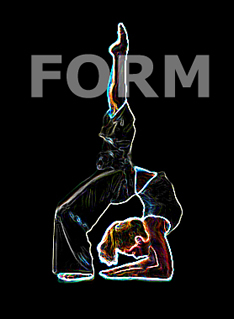Muscle Stretching
Most trainers promote muscle stretching as a way to improve fitness, reduce injuries, and recover quicker from hard workouts. It is also a part of many warm-up programs, something many athletes do without thinking before a workout or competition. However, recent evidence suggests that much of the stretching that people are doing is either a waste of time, or indeed, counter productive. When U.S. researchers examined six previous studies that had explored the benefits of stretching1, they found that stretching prior to competition or other physical activity did not prevent injury. In fact, they went so far as to say, "stretching prior to activity could have a bad effect. You might not jump as high or run as fast."  However, others believe that the issue is more about when you stretch your muscles and what type of stretching you do. Timing is crucial – the overwhelming evidence is that stretching should not be part of your warm-up. However, others believe that the issue is more about when you stretch your muscles and what type of stretching you do. Timing is crucial – the overwhelming evidence is that stretching should not be part of your warm-up.
Indeed, research shows2 that static muscle stretching can in fact reduce strength for up to one hour, at both high and low speeds. Your warm-up should be getting your body moving, elevating your heart rate, and getting your muscles warm – stretching, on the other hand, is designed to relax you, calm you down, lower your heart rate. Warming up – that is, actually exercising muscles instead of stretching them – is important, and will help to improve both your flexibility and your performance3. Clearly the best time for muscle stretching is after your workout – as a part of your cool-down. However, there are several different types of stretching, and which you do is crucial. The most common types of stretching exercises are: • Static stretching – this is what most people do. You hold a stretch for 30-60 seconds. • Ballistic stretching – this involves bouncing into a stretch. It is now rarely practiced as most people are aware of the potential for muscle pulls and injuries. There is also an alternative type of stretching, one which many pro athletes have begun using over the past ten years – it is called Active Isolated (AI) stretching. AI stretching was developed by registered kinesiotherapist and massage therapist Aaron L Mattes, and has been shown to make substantial improvements in muscle elasticity, improve explosive power, and help to help prevent injury. AI Stretching works by transporting oxygen to sore muscles, removing toxins from the muscles, and activating muscle fibers. Here’s how to do it: • Stretch one muscle at a time • Actively contract the muscle opposite the isolated muscle – when you contract the opposing muscle, AIS triggers a nervous system response called "Reciprocal Inhibition" that forces the target muscle to relax • Stretch the target muscle gently and quickly, holding the stretch for no more than two seconds • Release the stretch before the muscle reacts to being stretched (i.e. before the stretch reflex kicks in). • Repeat five to ten times. This is a very quick and effective way to stretch that is now is being used by personal trainers, athletic trainers, physical therapists, and professional and Olympic athletes worldwide. Muscle stretching using the AI method has numerous benefits, including: • Improved muscle efficiency
• Greater range of motion
• Improved muscular balance
• Reduced injuries
• Faster recovery from workouts This is a simple technique to perform, quicker and more efficient than traditional static stretching. Why not check it out?
1Medicine & Science in Sports & Exercise. March 2004
2Fields MD, Karl B, Burnworth, MD Craig M., Delaney MD, Martha. "Should Athletes Stretch before Exercise?" Sports Science Exchange, Volume 20 (2007) Number 1; Shrier, Ian. "When and Whom to Stretch" Physician and Sportsmedicine, Mar2005, Vol. 33 Issue 3, p22-26; Sports Science Exchange. "Should You Stretch Before Exercise?" Gatorade Sports Science Institute. Volume 20 (2007) Number 1;
3Med Sci Sports Exerc 2005; vol 37, no 9, 1608-1614 Back to top of Muscle Stretching
|